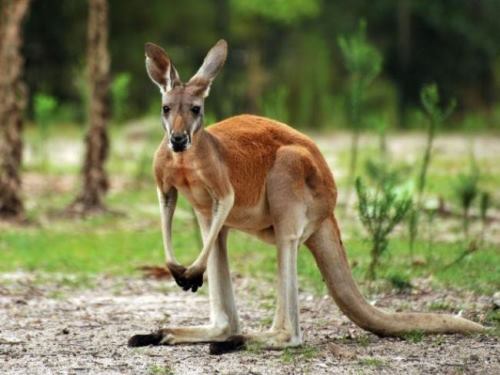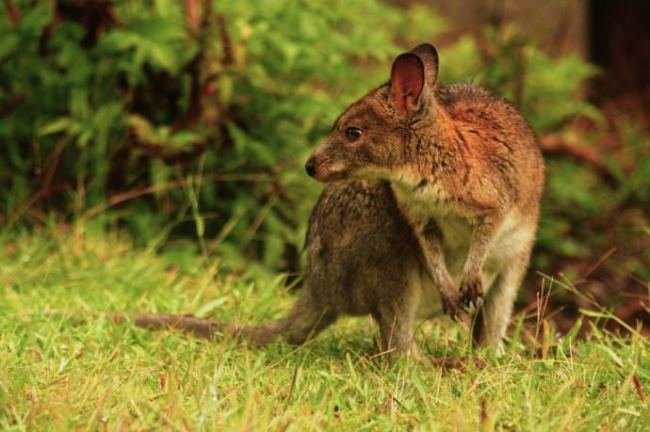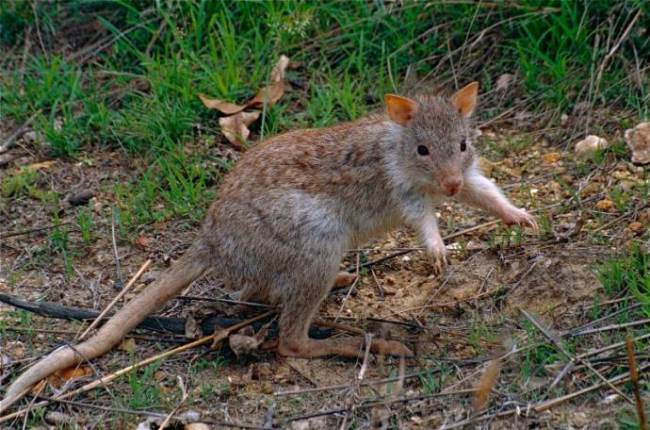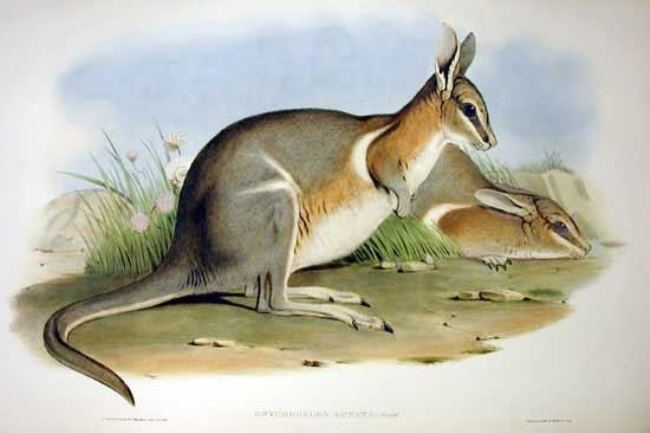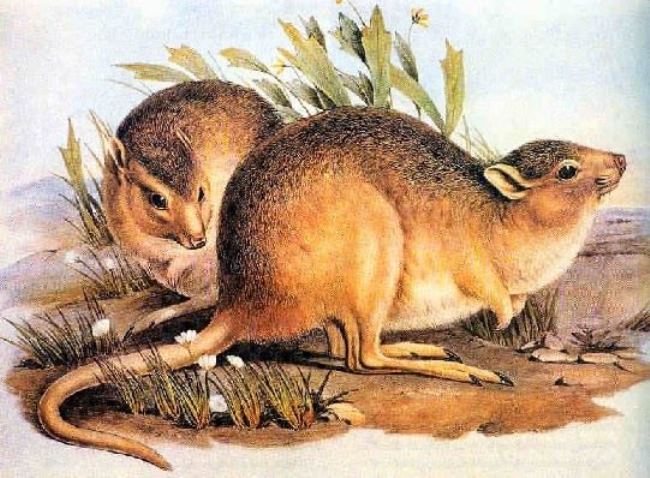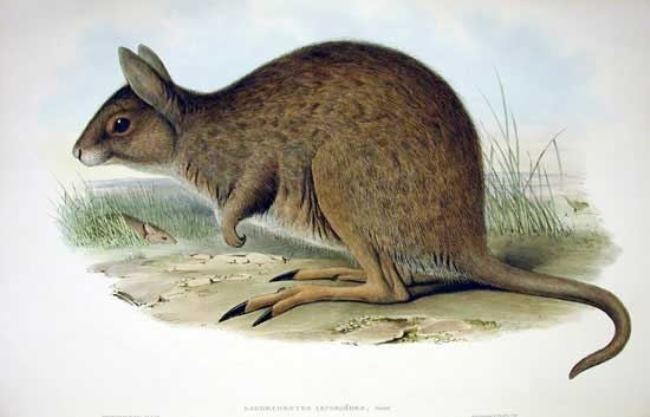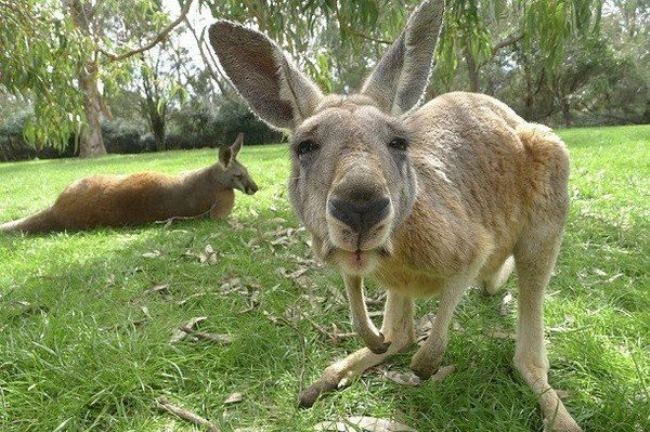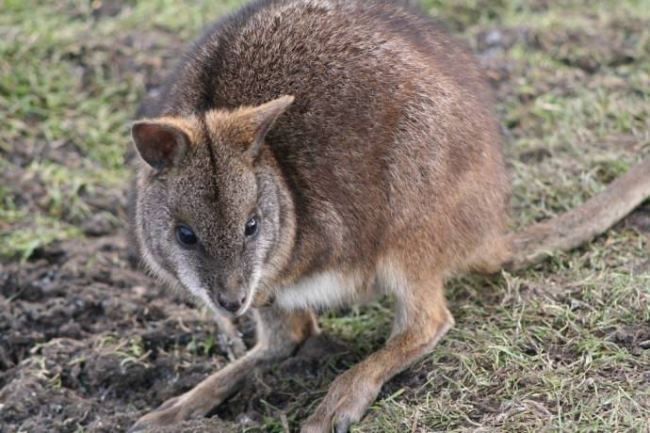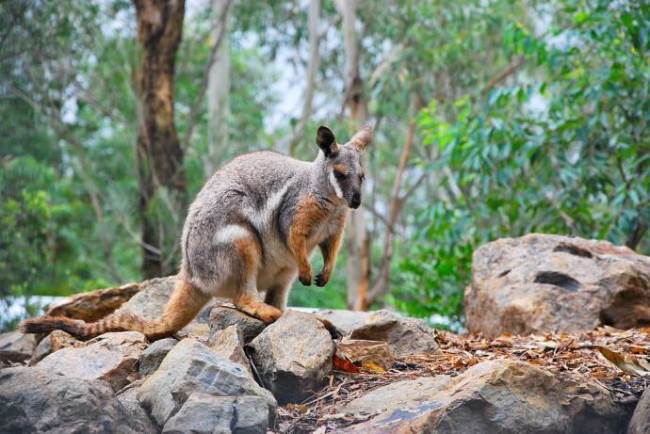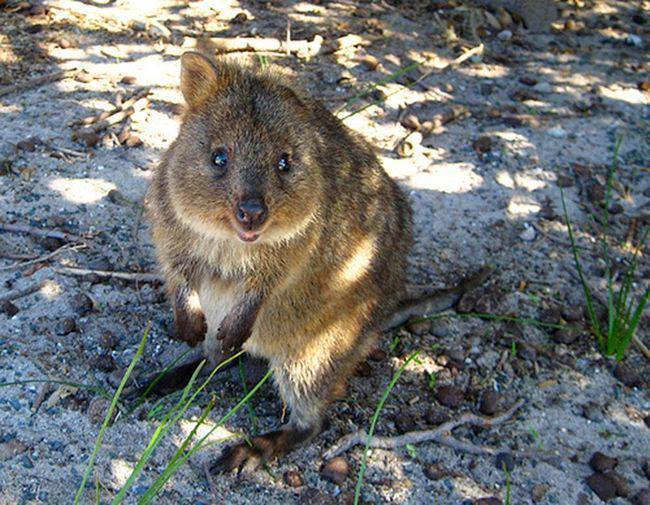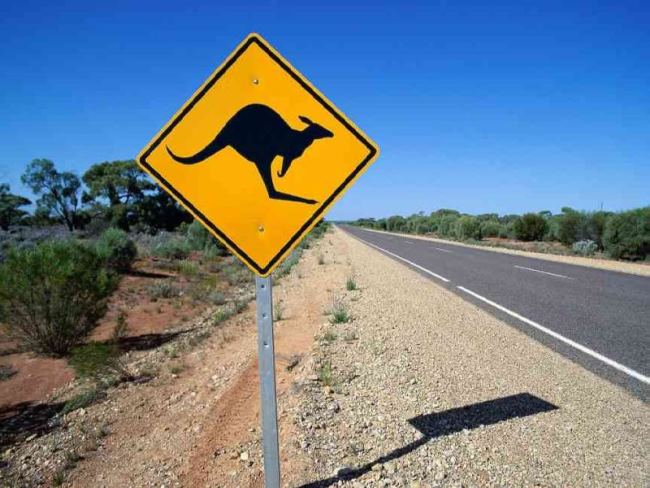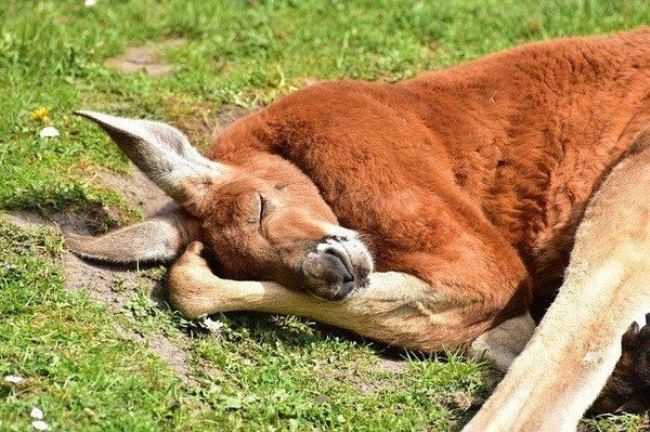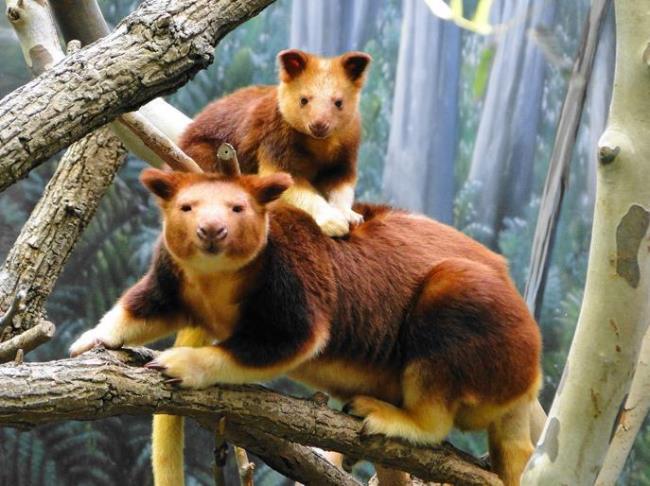Awesome Kangaroos
Kangaroo is one of Australia’s most recognizable and popular animals. Indeed, its image is even present on the state emblem of the Green Continent! For every Australian kangaroo is a symbol of progress, non-stop forward movement, and all because this animal is purely physically unable to jump back.
Despite the fact that the kangaroo appeared in the scientific world more than a hundred years ago and has been closely studied by biologists since then, this beast remains a mystery to scientists. Even the name itself – the kangaroo – for a long time baffled everyone. The most popular version of the origin of this name was a mythical story that the “kangaroo” from the local dialect is translated as “I do not understand.” Allegedly, this is exactly how the natives answered the questions of the curious captain Cook, who poked his finger at a jumping marsupial animal unknown to Europeans. So the version that the “kangaroo” actually translates as “big jumper” is much more believable. And the word was heard not by Captain Cook, but by a completely different English navigator William Dampier. And if you stick to the first version, then all the animals and plants of Australia would have been called “kangaroo” by the Europeans.
These animals drink very little water quite consciously. Even in extreme heat, in the presence of water, the kangaroos stay away from sources and would rather prefer to peel the bark from the trees and lick the sap than to quench their thirst with water. Some scientists attribute this to the fact that water reduces the nutritional value of already scarce food, so kangaroos prefer not to dilute useful substances in their bodies in vain.
There are quite a lot of different types of kangaroos – more than fifty, starting from the smallest, kangaroo rats, and to huge, red kangaroos, whose growth can reach three meters.
Kangaroo rats are least associated with the classic kangaroo and look like mice.
Quokka looks much more funny. They are tailless, but already similar to real kangaroos, although the resemblance to mice is still clearly visible. They are perhaps one of the most defenseless species of kangaroos, they prefer to live in small territories more or less isolated from the surrounding world.
Those kangaroos that we are used to see in photographs, television screens and zoos are actually called wallabies. Wallaby is a medium-sized kangaroo and they are most adapted to life in captivity. One of the subspecies – rock wallaby – has an interesting feature: the feet of his hind legs are covered with thick and very hard fur, which allows it to climb up the rocks. Thanks to this fur, a rock wallaby is able to jump over wet and slippery stones, and, if necessary, over inclined tree branches. By the way, wallaby is involved in such a mysterious phenomenon as crop circles. According to the governor of the island of Tasmania, these animals have been seen more than once in the places of cultivation (exclusively for medical purposes) of opium poppy. Having eaten poppy seeds, the wallabies for some reason begin to jump in a circle, and thus “draw” those same mysterious circles.
Now in the wild wallaby can be found not only in Australia, but also in England, Scotland, France. For example, a group of about thirty Wallabies lives literally 50 kilometers from Paris. These European colonies of Australian “Aborigines” appeared after one or more pairs of kangaroos escaped from zoos.
Tree-kangaroo is a species close to the wallaby. On all fingers of these animals there are long hooked claws, with the help of which they quickly climb trees. Sometimes they even jump from branch to branch.
So, what about the big “real” kangaroos? There are three species. A gray kangaroo lives in forest zones; red kangaroo prefers flat places, and, finally, wallaroo is a gloomy inhabitant of the mountains. Unlike other types of kangaroos trying to gallop in case of danger, the wallaroo is extremely pugnacious and likes to attack first. True, again, unlike other kangaroos, the wallaroos only scratch and bite, and never use their hind legs in battle, and it is a blow from the hind legs that is often fatal to the enemy.
Australians often keep kangaroos as pets. Usually these are kangaroos whose mother died. They sew a bag for a baby, similar in size to a bag of kangaroos, hang it in a comfortable place and put a kangaroo there along with a bottle of milk. After a while, the baby gets used to the bag and can climb into and out it.
